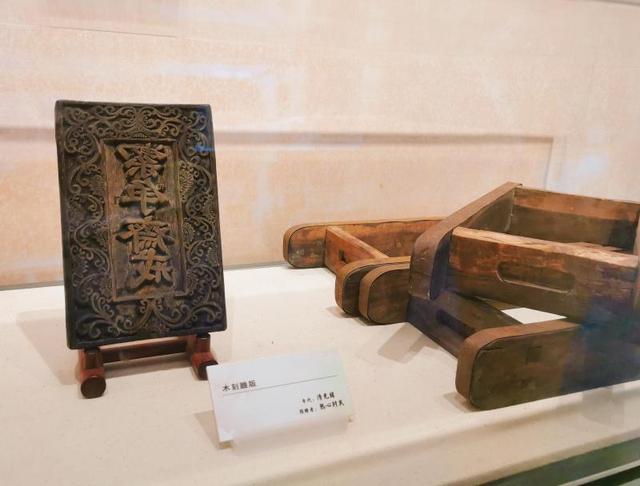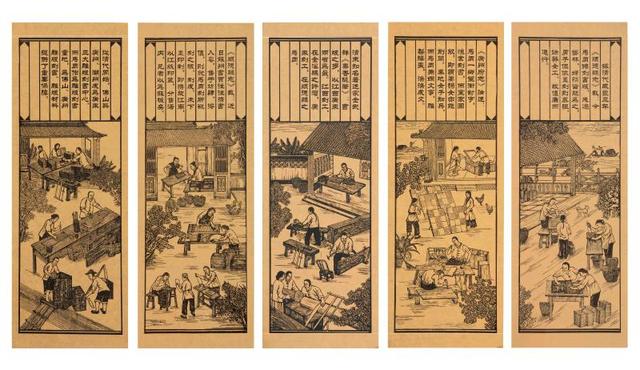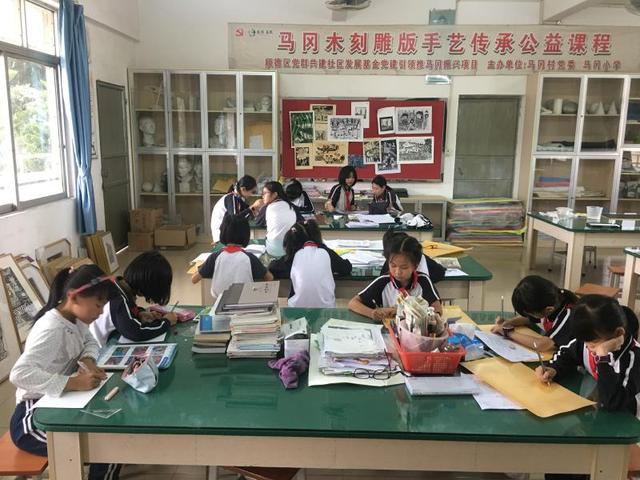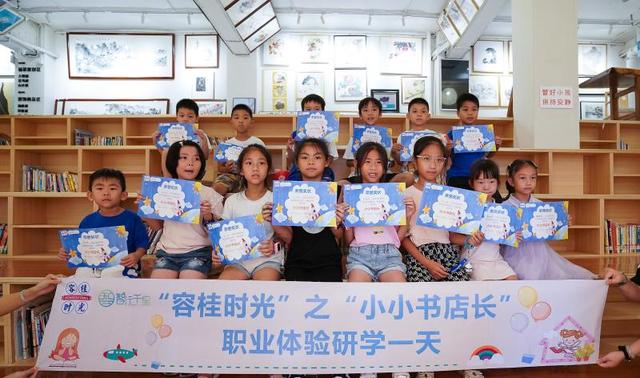"Foshan Wenmai" is surrounded by water on all sides. A small island was once a Lingnan engraving center: visiting the non -heritage art of the engraving of the Magang Village in Rongdeng Gui Gui, Shunde
Author:Yangcheng Evening News Yangche Time:2022.09.23
Text/Yangcheng Evening News reporter Yang Yuan Yingtu/Ronggui Street Propaganda Cultural Tourism Office Magang Village Committee for Sports Tourism Office
In June of this year, the first batch of 27 research practical education bases in Shunde District, Foshan City was officially announced, covering the four categories of culture, history, science and technology, and art. There are the inheritance bases of the Non -Heritage "Malacan Carving Skills" in Shunde District.
Magang, located in Ronggui Street, Shunde District, Foshan City. As a small island with an area of only 12 square kilometers and a resident population of only 8,000, it is the center of Lingnan wooden board engraving in the Qing Dynasty. There is a book describing "the sound of woodcuts from Martang's family in ancient times." How can an inconspicuous small island become the hometown of woodcut carving? Where will Magang's engraving technique be moved in the future after becoming an intangible cultural heritage? Today, follow the pace of the reporter of Yangcheng Evening News to understand this island and the "History of Water" behind it!
Makang Village, Small Island: History of Live in History
It is located in Magang, Ronggui Street, Shunde District, Foshan City. It is surrounded by water on all sides, and the Pearl River tribes passes through the island. The surroundings are surrounded by mountains. This island was originally called "Jinpo Island". It was renamed "Magang Village" after establishing the village in the 16th year of Chenghua in the Ming Dynasty (1480). According to the "Shunde County Chronicle": "Magan, in front of the village, the village is named after the mountain." In front of the village entrance, there is a hill that looks like a hoy horse, and people call this place "Magang".

Photo by Zheng Weifeng, Malacan New Out
Although the river is separated geographically, Macang has never been exchanged. Malacan used the 18.7 kilometer -long river embankment to create developed waterway transportation, but became one of the Shunde Water Road Transportation Center. After the six years of Jiaqing (1801) in Jiaqing in the Qing Dynasty, Magang set up four ferry four ferries of "to Daliang", "Passing Po Temple", "Passing Rongqi Market" and "Magang". As the demand for external activities increased, by the end of the Qing Dynasty At the beginning, Malagn added 6 ferries including "Flying Goose Ferry".
In addition, Magang is a must -have place for Guangzhou merchant ships to Jiangmen and Xiangshan. According to the Qing Dynasty Xianfeng Shun Dezhi and the Renewal of the Republic of China, Magang has flights to and from the provincial capital, Foshan, Shiqi and other places every day.
In such frequent foreign exchanges, the views and cultural literacy of the Macan people have gradually increased, and their thinking is gradually open. Under the continuous improvement of the economic environment, people began to attach importance to education, and the popularity of Chongwen Shangjiao spread. During the Daoguang period of the Qing Dynasty, the Magang people planned a "Golden Bo Academy", and then set up "Shenbu Social Science". By the end of the Qing Dynasty and early Republic of China, there were nearly ten private schools on Macan Island. House, Yiwu, and Education Hall have also been held. "Guangjiu College, Xingxue Stopping Talent" has become a wind, which has also created the scene of talents. According to statistics, there are dozens of scholars and luggage in Malacan in history, and there are also many "leaders" in various fields in modern times, such as Tao Copystracks, such as Wensing, electrical expert Wen Shusheng, and famous Cantonese opera performing artist Feng Jinghua.

The woodcut carvings during the Guangxu period of the Qing Dynasty
Malacan is also known as the "Treasure Island" of Shunde. Here are the talented people. They not only have the literati Yamo, the temple of the ancestral hall, but also the secrets of loyalty.
In the late Song Dynasty, Wen Tianxiang, who was "reserved in Dan Xin's heart", was loyal to his beliefs and qi festivals. In order to avoid the death of the family, one of the veins of the Wen family secretly moved to the desolate and remote Magang, which was blocked by the rivers, and hid her identity to survive. It wasn't until 2002 that Wen Tianxiang's descendants were discovered, and people knew that the Wen family had lived in seclusion for so long.
This conservative secret righteousness continued to the Ming Dynasty. At that time, Yuan Chonghuan, the general of the Ming Dynasty, was killed by the Emperor Chongzhen. One of the servants, Shi Yishi, was Malacan, Shunde. He risked his life and accepted Yuan Chonghuan's corpse, and his descendants of the family had been guarding the tomb for generations.
It is such a place that is open to the outside world, tolerance and simplicity, Chongwen Shangjiao, and family unity. It becomes the center of the engraved book and is inseparable from the objective conditions and cultural and folk customs that Malang's own.
Magang's engraved book "History of Weishui": Compared with "Su Ban" reputation
"There are many descriptions, with Jiangxi and Guangdong provinces the most. Jiangxi engraved work in Xuwan in Jinxi County; engraving workers in Guangdong, in Magang in Shunde County." In this way, Malagn is famous for its reputation in the middle and late Qing Dynasty.
According to historical records, the rise of the Malaga engraving book has a deep relationship with the high commercialization of the bookstrees in the Jiangnan area and the Guangzhou Foshan has become a printed place. "Shunde County Chronicle" mentioned: "Suzhou books often bring books into Cantonese and sell them in the book. After getting worth it, bring the manuscript to Magang to engrav. Printing and sale at home, the people think that the Su Banxian is. "Jiangnan carved workers have risen, and businessmen found that Shunde Magang's carved work is not only low in price but superb, and can be comparable to" Sucker ". Start using a large amount of Magang Mujiu carved version to print the book.
To this end, Magang specializes in the front of the book before, that is, the location of Magang Greek today, and the engraved desks are transported to various places through the waterway.
"According to the elderly in the village, almost every family came from the households, and the family was engaged in the engraving industry." Huang Huifang, director of the Office of the Magang Village Committee of Ronggui, introduced that at the time, the Macan people came back from Guangfo to live, First find an artist in the workshop, draw the text and draft well, and then put it on the wooden board, leave the boundary line and then engraved one by one. Peng Guizheng, a carved version of Magang Muki, followed the study and practice stereotypes. First, he carved a shallow outline according to the words. Whether her aunt school was accurate, and then continued to engrave. The book "Inheritance and Innovation of Shunde Magang Printmaking" was introduced that at the time, there were many girls in Magang Village. Some people did not recognize the words, and they drew gourds. They were only responsible for engraving some simple fonts or patterns. Carved work to complete the desk.
In the past, there were a lot of female workers like Peng Guizheng, and Magang was also one of the areas in China that had been engraved with women's engraving books. How much is the desk of the dowry and the measure of family wealth.
"In addition to books, there are printed printed materials that are in response to local customs, such as wooden boards, annual examples, noble paper, and products used for sacrifice." Huang Huifang said. According to the research data of "Foshan Wooden Board Printing in the Ming and Qing Dynasties", Malacan engraved books are mainly popular readings, such as Tongsheng, yellow calendar, woodfish book, etc. There are also textbook textbooks, such as "Three Characters" and "Hundred Family Surnames". The teaching books of Magang Jinsbo College use their own enlightenment books.
In fact, the carved version of Weimu in the printing session is the most tedious time, and basically mastering this technology must be trained for at least one year. Peng Guizheng once introduced that her aunt followed the master for several years to have the opportunity to engrave the painting. However, as long as the Macan people learn, the exquisite carvings can be born in their clever hands.
For a long time, the handicraft industry of Shunde and Magang has been very developed. The talents of craftsmen are good. From furniture, ships to cake printing and carving, the craftsmanship is well -known.
The black and white woodcuts produced by Rongcheng Art Museum, the hometown of Magang Mujiu Edition

Malacca engraved book skills: non -heritage culture is regaining traditional techniques to be revived
However, with the development of the times, Western lead printing technology has gradually become popular, and more efficient and accurate machines impact the traditional manual printing industry. The "engraving skills" was only a living craft for the Magang people at that time. When the market was no longer needed, most people naturally chose to switch career. By the 1930s, there were only more than 30 people in the carving workers of Macang, and the Magang Mujiu carving industry gradually declined.
Wu Guolin, chairman of the Shunde Writers Association, found Peng Guizheng in 2004, and learned about Magang's engraving skills who had been sleeping for many years. However, because Peng Guizheng was nearly ninety at that time, he could no longer teach young people.
In 2015, Peng Guizheng, the only carved version of Magang Muki, died. No one knew the most traditional engraving skills. Malagn's traditional skills encountered a fault.
As a native of Shunde, Wu Guolin hopes to restore this traditional skill. He believes that the Malacan engraved book is the wisdom of the farming civilization passed down from the Malagn villagers on behalf of the farming civilization. Conservation of the Malagn version can awaken the historical and cultural identity and self -confidence in the hearts of the public, and re -understand the practical significance of traditional culture. Helps maintain the diversity of culture and promote the sustainable development of the countryside.
"The engraved book may not be used again, and the illustrations in the engraved book, that is, the traditional woodcut prints, still active in the art world with tenacious vitality." In 2008, Wu Guolin established the Magang Edition Workshop at the Rongcheng Art Museum. I hope to save the engraving skills through printmaking and start trying to re -engraved the Martang prints, but it is very different. "At first we didn't understand the carving knife method. Often, we were engraved with a mess. After the carving was carved, it was printed and found that it was completely different from the original sample." The more like a decent.
Painting exhibitions, seminars, public welfare classes, book publishing ... The Magang Edition has received more and more attention and affirmation with the efforts of a lot of local cultural people. The eight batches of the Intangible Cultural Heritage Project of Shunde District, the once forgotten local skills ignited the "fire of rejuvenation".
Inheritance and renovation: the newborn power conveys the "memory" of Magang
The well -known aestheticist Boriev once said: "Culture has preserved everything in the past. Culture is the memories of human beings." The "Magang Carving Skills", as an intangible cultural heritage, is the human history of Magang Village and even Lingnan. The invisible recorders convey the common memory. To let the public truly understand non -heritage and love non -heritage, starting from turning it into seeds, sowing in the children's hearts.
Magang Elementary School Printmaking Studio

Around 2015, Magang Elementary School opened a segment interest class. With the support of the Malacan Village Party Committee's funding, the school established the Magang Elementary School printmaking studio to stimulate more students to become interested in prints, cultivate them in -depth learning, and form a horse. Print work with cultural characteristics.
Li Rongfu, the art teacher responsible for teaching courses, introduced that the opening of the prints of the prints combines the local characteristics of Magang. It is hoped that the children can understand the local history and culture.
"The interest class is set in the free time after the afternoon, and the number of people is between 15-20 people. Children in 6 grades can participate. But because the prints have requirements for power and art foundation, children in the lower grades are based on the foundation. Lord, older children start learning sculpting skills. Generally, students in grades 5 and 6 can independently complete their works. "Li Rongfu said that most students think that printmaking creation is a very interesting process. Many students fall in love with local art. To learn to appreciate paintings, "Although the content of the learning is relatively basic and simple, it has benefited for them for life." In addition, the Malang Village Party Committee and the Village Committee have passed the community activity platform since 2018. Link the Malacan Primary School, social workers, enthusiastic villagers, etc., facing children, teenagers, and adults in the village, and carried out more than 10 version of the print experience activities, prints of prints, etc. In the event, let them know the history of the carved version of Magang Muki and feel the printing skills of printmaking. Charm, thereby activating their continuous participation in the inheritance of printmaking skills.
At the same time, with the support of the two levels of Shunde District and Ronggui Street, when Magang Village builds the Malacan Village Red Corner Party Museum, Magang Village History Museum, and Magangjia Wind Museum, the printmaking history, printmaking space for printmaking, and printing The display of prints is integrated into it, hoping to provide a platform for showing the history of Magang Mujiu carving and inheriting the Magang prints.
"We hope to explore the path of the Malacan version of the Martang version of the Malacan version of the Malacan version of the Malacca Party Mass Service Center and the Martang Primary School printmaking studio as the position, and carry out more systematic printing skills learning courses to cultivate The team with a gradient. "The relevant person in charge of the Magang Village Committee said that in the future, on the basis of combining the local cultural characteristics of Magang, it will derive more creative cultural and creative products to add vitality to the inheritance of the Malacan version.
Ronggui Street Propaganda Cultural Tourism Office stated that the next stage will use the Malacan engraving technical studio as the foothold, to promote the creation of high -end and core printmaking brands, and play the role of Malang's prints to engrav the local feelings to engrave the local feelings, and use a different perspective to perspective. Record and show the high -quality development of Ronggui and even Shunde's economy and society. In addition, through the research tours created by the "Ronggui Time" cultural tourism IP, design a line with the theme of Magang history and culture, so that more students can experience the non -heritage skills Really extended among the next generation, glory and passed on the fire.
"Rong Gui Time" series of research tour created by cultural tourism IP
Source | Yangcheng Evening News · Yangcheng School

Editor -in -law | Huang Lei
School pair | Yu Yanhong Huang Yinglin
- END -
Daily good poetry | Who can think of the dreams of dreams?

Seven Laws · Floating SnowText/Jiang Bo (Sichuan)The snow fierce wind came to cov...
Why do some people suggest that you do not use boiling water when you baire white cash needles?

丨 This article is original by Xiao Chen tea丨 First of the People's No.: Xiao Che...